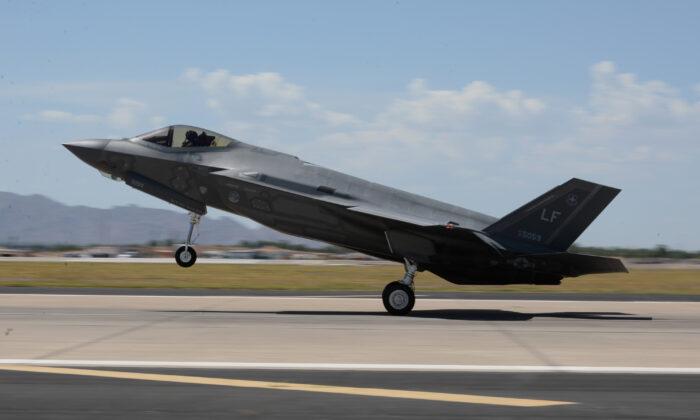A flagship F-35 jet has crashed on landing at a Florida airbase—the second stealth jet to crash during training in the last five days.
“At the time of the accident, the pilot was participating in a routine night training sortie,” said the statement. “The accident is under investigation. There was no loss of life or damage to civilian property. The name of the pilot is not being released this time.”
The F-35 crash is the second in the United States after a Marine Corps version of the stealth jet crashed in September 2018.
The F-35 is regarded by many as the most advanced fighter jet in service—and one of only three so-called “5th generation” fighters in the world.

Developed as a joint forces program, the F-35 was envisioned as the next-generation backbone of fighter fleets of the Navy, Air Force, and Marine Corps, with an efficient single-engine and universal design aimed at cutting production and running costs.
But the original simple vision of a jack-of-all-trades morphed, with the program splitting into what many analysts say is really three different aircraft with very different technical requirements.
Those different versions are a carrier-friendly version designed for the catapult systems unique to U.S. carriers that launch aircraft off the deck; a vertical take-off and landing version that can be used by other nations’ carriers and by the U.S. Marine Corps’ amphibious ships; and a regular version used by the Air Force.
It was first deployed in 2018.
The F-22 Raptor cost around $140 million per plane, with only around 180 finally in service after production was axed over cost concerns and during a shifting of the political winds.

The F-35A versions flown by the Air Force are estimated to cost around $80 million each.
In total, Lockheed Martin, partnered with engine makers Pratt & Whitney, is expected to make an estimated 4,600 F-35s over the entire life cycle. The first F-35 flew in 2006, but the aircraft has only recently entered service.
The Air Force hopes to procure over 1,700 of the A varient.
The $428 billion price tag for the program has already raised eyebrows, but members of Congress are wary of the even larger estimated $1 trillion lifetime sustainment costs, especially with sustainment problems currently creating drag.





